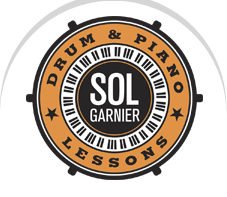Among my beginners, I get two types: the loud ones and the quiet ones. Either type has its own pros and cons. The boldness of the loud ones makes them good performers, not afraid of the audience and eager to share their music with others. The quiet ones are exploring the delicate cogs of a piece, carving slowly into the depth of the interpretation.
I have a lot of exercises to make each kind go to the other side. One of the most simple exercise is to ask them to play a chord. The loud ones crash a cataclysmic thunder while the quiet ones caress a whisper. Then I tell them to go a little quieter for the bold ones and a little louder for the delicate ones. Progressively we diminish the sound for the former and increase it for the latter. We usually hit a few snags along the way, as you can imagine, but the biggest snag is when both parties realize the range of the instrument. I say it is a snag because I’ve seen some freshly converted shy players smashing the keys as the new normal and some brash students becoming timid to the point of not making any sound at all. We then need a reference.
Enter the sheet music. We get a song they know and have practiced and we look at those marking: p, f, ff, mp. I’ll translate. p stands for “piano” meaning soft. f is for “forte”: loud. ff is “Fortissimo” which indicates “very loud. as for mp it means “mezzo piano”: medium soft.
Oh, how many wide eyes have I seen as the student suddenly explore the territory of dynamics never before seen! How many smiles! How many steps into the music! And the emotions! The player discovering that from dynamics comes emotions is a sight to behold! They realize that not only that they can use those dynamics to the extreme but also that they can inject and emphasize their own emotions into the piece. Huzzah! Music is great! The world is not such a bad place after all! and all this sort of things. I love teaching.

